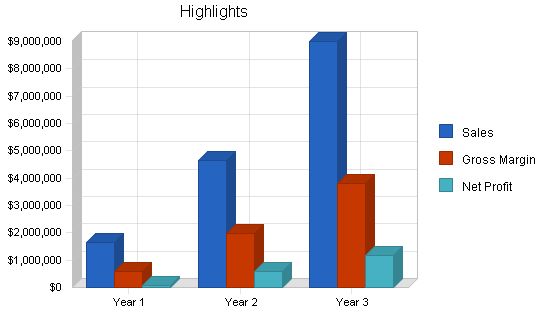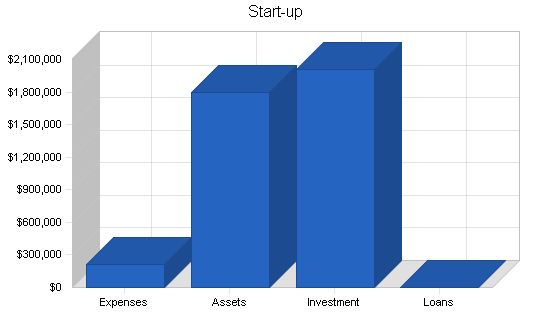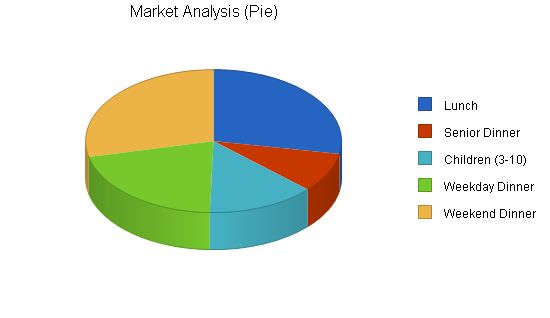Sagebrush Sam’s, a unique "steak buffet," offers excellent food at value pricing in a fun and entertaining atmosphere. This concept addresses the increasing demand for value, high expectations, and entertainment in dining experiences.
Differentiating one restaurant concept from another in today’s competitive environment is challenging. However, Sagebrush Sam’s stands out as the only buffet that features mesquite-grilled, USDA-choice sirloin steaks. These steaks are cooked on our display grill to perfection and served at one low price. We use top-quality, hand-cut, 21-day aged steaks, ensuring a satisfying meal. Our grill is always stocked with steaks cooked to the desired degree of doneness, eliminating wait times. This innovative feature sets us apart from other national chains and caters to the growing demand for red meat, especially steaks.
This restaurant business plan aims to secure financing for the initial launch of our concept. The funds will cover kitchen design, architectural plans, manuals and recipe books, site selection, equipment purchases, and the first year’s expenses. Additional financing will be required for two more units planned for July, Year 2, and January, Year 3. However, our positive cash flow will help alleviate this burden.
With the financing and capital contributions from the owners, Sagebrush Sam’s will successfully open and maintain operations in year one. Our initial capital investment will provide customers with a value-driven and entertaining dining experience. We aim to create a unique, mid-scale, and innovative environment that appeals to middle America, encouraging them to dine and socialize with family and friends. By operating successfully through year three, we expect to generate enough cash flow to be self-sufficient in year four.

Objectives:
– Grow one unit per year for the first three years.
– Keep food cost under 35% of revenue.
– Maintain employee labor cost between 16-18% of revenue.
– Average sales in each location between 3-4 million dollars per year.
– Maintain tight controls on costs and operations by hiring a managing partner/proprietor for each location and utilizing automated computer/Internet control.
Mission:
– Strive to be the premier buffet restaurant in the local marketplace.
– Provide guests with a great meal and a fun atmosphere.
– Serve quality food at a great value.
– Feature a large selection of freshly-prepared food.
– Strive for broad appeal.
– Treat employees fairly and with respect.
Keys to Success:
– Create a unique, entertaining, mid-scale atmosphere.
– Serve high-quality food at low prices in a clean, fun environment.
– Control costs in all areas.
– Hire, train, motivate, and encourage the best people available.
– Entertaining surroundings with display cooking and Western antiques.
– Quality food with fresh ingredients and old-fashioned care.
– Lunch special: 1/3 lb. Sam’s Specialty Beefburger.
– Variety in daily menus and special theme dinners.
– Open only for peak business periods.
– Offering buffet breakfast at select locations.
– Self-service system to exceed guest expectations.
– Friendly employees and interactive experiences.
– Extended dinner hours on weekends.
– Reduced dinner pricing on weekdays.
Company Ownership:
– Sagebrush Sam’s is a sole proprietor business owned by Samuel Brooks.
Start-up Summary:
– Kitchen design by a confidential source.
– Architectural plans by a confidential source.
– Travel expenses for construction oversight and staff hiring/training.
– Expenses for manuals, handbooks, recipes, and employee training materials.
– Pre-opening labor for training and restaurant preparations.
– VIP lunch and dinner events for staff training and community introduction.
– Building/land/equipment options for growth.

Start-up Requirements. Start-up Expenses.
– Kitchen/Architectural Plans: $75,000
– Travel and Lodging: $8,000
– Design of Logo: $6,500
– Manuals/Handbooks/Recipes: $2,420
– Recruiter Fees/Help Wanted Ads: $28,500
– Pre-opening Labor-staff/Mgmt/Trainers: $72,750
– Uniforms: $3,450
– VIP Lunch/Dinner: $6,825
– Office/Miscellaneous Expenses: $5,500
– Total Start-up Expenses: $208,945
Start-up Assets.
– Cash Required: $160,000
– Start-up Inventory: $35,000
– Other Current Assets: $100,000
– Long-term Assets: $1,500,000
– Total Assets: $1,795,000
Total Requirements: $2,003,945
Start-up Funding.
– Start-up Expenses to Fund: $208,945
– Start-up Assets to Fund: $1,795,000
– Total Funding Required: $2,003,945
Assets.
– Non-cash Assets from Start-up: $1,635,000
– Cash Requirements from Start-up: $160,000
– Additional Cash Raised: $0
– Cash Balance on Starting Date: $160,000
– Total Assets: $1,795,000
Liabilities and Capital.
– Liabilities.
– Current Borrowing: $0
– Long-term Liabilities: $0
– Accounts Payable (Outstanding Bills): $0
– Other Current Liabilities (interest-free): $0
– Total Liabilities: $0
– Capital:
– Planned Investment.
– Sam Brooks: $500,000
– Investor 2: $1,503,945
– Other: $0
– Additional Investment Requirement: $0
– Total Planned Investment: $2,003,945
– Loss at Start-up (Start-up Expenses): ($208,945)
– Total Capital: $1,795,000
– Total Capital and Liabilities: $1,795,000
– Total Funding: $2,003,945
Company Locations and Facilities
Sagebrush Sam’s will range in size from 7,000-10,000 square feet and will seat 300-400 guests. Each location will feature authentic western antiques such as Native American blankets, cowboy gear, and horse tack. The restaurant will have a state-of-the-art sound system connected to an old-time jukebox where customers can select their favorite country and western songs for free. Every restaurant will be built to our prototype specifications: clean lines, open, and pleasing to the customer.
The site/building selection will be based on the following criteria:
– Community size minimum of 40,000 people within five miles.
– High visibility.
– Easy access to a parking lot with a minimum of 120 parking spaces.
– Mid- to low-cost land not exceeding $600,000.
– Heavy blue-collar worker makeup in the community.
– No overabundance of competition in the trade area.
These qualities align with Sagebrush Sam’s goal of providing a top-quality, entertaining dining experience at an unbelievably low price. We want “word of mouth” to be our best form of marketing, where guests cannot believe the value of their dining experience and can’t wait to tell their friends and neighbors.
Services
Sagebrush Sam’s will provide quality dining seven days a week. Locations will be open for lunch and dinner, with selected locations serving breakfast either daily or only on weekends. All meals will be self-serve buffet-style offerings for a fixed price.
Competitive Comparison
Sagebrush Sam’s will have broad customer appeal due to our casual family atmosphere, wide variety of food offerings, and low price points. We will compete not only with casual segment restaurants but also with family value steak restaurants.
In competing against casual theme restaurants, we have the following advantages:
– Lower price point for a complete meal. If our consumer is a steak lover, their Sagebrush Sam’s meal is almost half the price compared to a theme restaurant.
– No tipping at Sagebrush Sam’s, since we are self-service. This reduces the actual customer cost of our dining experience by 10-15%.
– Instant speed of service: no waiting for a steak, salad, beverage, or dessert.
– Portion sizes that meet the need, as we are “all-you-can-eat”.
– Over 100 different items prepared fresh daily, providing variety for every family member.
– More entertainment provided in our restaurants.
In competing against family value steak restaurants, we have the following advantages:
– Better quality food, including USDA-choice sirloin steaks hand-cut daily and aged for 21 days.
– Lower price point at lunch, featuring a fresh Sam’s Specialty Beef burger.
– More entertaining surroundings.
– Fresher food, as we close briefly during weekdays.
– No service problems encountered by guests.
– Simple and clear pricing, with everything included.
– No need for trays, as everything is conveniently placed in the dining room near the food stations.
– Staffing with 25% fewer employees than our competition.
– No tipping at Sagebrush Sam’s, since we are self-service.
Sales Literature
Currently, Sagebrush Sam’s does not have any sales literature. However, we plan to produce three different pieces once we open. These pieces will be relatively inexpensive to produce and most will be accomplished in-house using desktop publishing. The planned pieces include:
1. Table Toppers: Explaining the concept, differences between lunch and dinner, "Theme Nights," selling gift certificates, announcing job opportunities, and mentioning franchise possibilities.
2. Brochures/Handouts: Explaining the ability to handle large parties, banquets, or buses; listing daily featured entrees.
3. Direct Mail Piece: Explaining the concept, listing prices, and showing inside photographs of our restaurant. This will be produced and mailed after the first quarter of operation.
Technology
Each Sagebrush Sam’s location will have a single high-speed computer to provide a fast and efficient connection to the internet and serve as a link to our cash registers. This will enable us to poll each restaurant nightly to our Corporate Support Center and receive key financial information. We will also utilize online ordering, email, and have a website.
Future Services
Sagebrush Sam’s plans for slow and cautious growth during its initial start-up phase. In the first three years of operation, we foresee no more than three units. We will not develop more units than we have adequate manpower to operate. Our growth will be clustered within a short distance of each other initially, followed by neighboring geographical areas for development. Additionally, we will develop one ground-up unit and one conversion with the first three restaurants to determine the best model for future development.
Market Analysis Summary
Sagebrush Sam’s has the opportunity to be the first mover in the "all-you-can-eat steak buffet" concept on a national scale. The consistent popularity of steak, combined with a value price point in a buffet concept, has proven successful in other markets and will yield the same results nationally.
Target Market Segment Strategy
Sagebrush Sam’s intends to cater to the bulk of mid-America, a group chosen for several important reasons. The size of this group is significant, and with restaurants seating almost 400 people, mass appeal is necessary to fill them. This group represents heavy restaurant users who seek a value/price relationship that fits their limited or fixed incomes.
Our lunch strategy serves a dual purpose. First, we feature Sam’s Specialty Beefburgers to fulfill America’s craving for hamburgers. Second, we keep the price point at lunch as low as possible to compete with fast-food restaurants. By offering a variety of food items at an affordable price, we can broaden our customer base at lunch to include singles, teens, and professionals while still maintaining our core market segment.

Market Analysis
| Market Analysis | |||||||
| Year 1 | Year 2 | Year 3 | Year 4 | Year 5 | |||
| Potential Customers | Growth | CAGR | |||||
| Lunch | 6% | 2,888 | 3,061 | 3,245 | 3,440 | 3,646 | 6.00% |
| Senior Dinner | 6% | 932 | 988 | 1,047 | 1,110 | 1,177 | 6.01% |
| Children (3-10) | 6% | 1,406 | 1,490 | 1,579 | 1,674 | 1,774 | 5.98% |
| Weekday Dinner | 6% | 2,172 | 2,302 | 2,440 | 2,586 | 2,741 | 5.99% |
| Weekend Dinner | 6% | 2,958 | 3,135 | 3,323 | 3,522 | 3,733 | 5.99% |
| Total | 5.99% | 10,356 | 10,976 | 11,634 | 12,332 | 13,071 | 5.99% |
Market Needs
Sagebrush Sam’s sees our market group as having specific dining needs. Taken from a recent Consumer Reports on Eating Share Trends (CREST) survey, below are the needs we will focus on in Sagebrush Sam’s. Our core group:
– Seeks value.
– Wants variety and flavor in food.
– Looks for prompt service.
– Wants an entertaining dining experience.
– Insists upon a clean, friendly, and attractive dining environment.
Market Survey
A market survey was conducted in February, 2000 (seven months after the opening of the second steak buffet restaurant by Sam Brooks). Key questions were asked of 505 customers in the surrounding area to determine how they rated their dining experience at the steak buffet concept. Some key findings include:
Service Business Analysis
The restaurant industry in the U.S. has experienced rapid growth in the last 20 years and is now moving into the mature stage of its life cycle. Many factors contributed to the high demand for good restaurants in the U.S. today. People want more leisure time. There are more two-wage earner families today, and more discretionary income. The competition is strong, with many formidable chains competing for the consumer dollar. It is almost impossible today to strike off into a new, unique, untried venue. Only the strong will survive and prosper.
Due to intense competition, restaurateurs must find ways to differentiate their businesses to maintain a competitive advantage. The founder of Sagebrush Sam’s believes that combining the popularity of steak with the buffet concept is the key to success. The fact that no other national chain has entered this arena presents us with an opportunity and entrance into a profitable niche in the market.
Competition and Buying Patterns
1999 was a prosperous year for the restaurant industry. While not every chain was as successful as it could be, consumers continued to increase their use of restaurants. They happily paid a bit more for a meal. Operators, particularly chains, were cautious. No new units were built for the first time since the early 1990’s. The economic concerns did not greatly affect the restaurant industry, as sales and consumer spending continued to increase.
Restaurant Industry Long-Term Future
In the near term, it looks as though two things are likely to happen: restaurants may not have the resources to expand as fast as they did in the early 1990’s, and consumers are likely to continue to increase their demand for prepared meals and snacks. Well-managed restaurant companies have not enjoyed the market valuations that the dot-coms have in the past year. It seems that nothing the industry can do will attract capital the way it did earlier in the 1990’s. In spite of continued same-store sales increases, the lack of interest that the industry generates in the financial markets could keep restaurant operators in a conservative frame of mind in the near term. That lack of financial resources combined with the restrictions faced in the labor market should hold unit development back.
These operators will be wondering how to get more out of the real estate they already have. One way to do this is to raise prices. They have been doing this with fair success for the past couple of years and are likely to continue to do so. In addition, they are likely to want to get into new business segments: expand into breakfast, offer takeout or delivery service, experiment with snacks. Those ideas will require partnership with manufacturers to develop and design those new concepts within the existing chains.
Fortunately, consumers are likely to continue to contribute to the market. Over the long term, consumers have spent about 5% of their disposable personal income on food away from home. Given the stability of this number, you can expect that total spending in the industry will grow no more than a shade faster than income. All prospects look good for income growth, so we are likely to see continued 3%-5% growth. That should be sufficient for everyone, provided people and the necessary finances are available.
Meeting Tomorrow’s Needs
We must first look at how our population is segmented in order to understand tomorrow’s needs. Below is typically how we segment the various generations.
Generation
Birth Years
Population
Hello!
I’m Andrew Brooks, a seasoned finance consultant from the USA and the mind behind phonenumber247.com.
My career is built on a foundation of helping individuals and businesses thrive financially in an ever-changing economic landscape. At phonenumber247.com, my aim is to demystify the complex world of finance, providing clear, actionable advice that can help you navigate your financial journey with confidence. Whether it’s personal finance management, investment strategies, or understanding the nuances of market dynamics, I’m here to share insights and tools that can propel you towards your financial goals.
Welcome to my digital space, where every piece of advice is a step closer to financial clarity and success!
